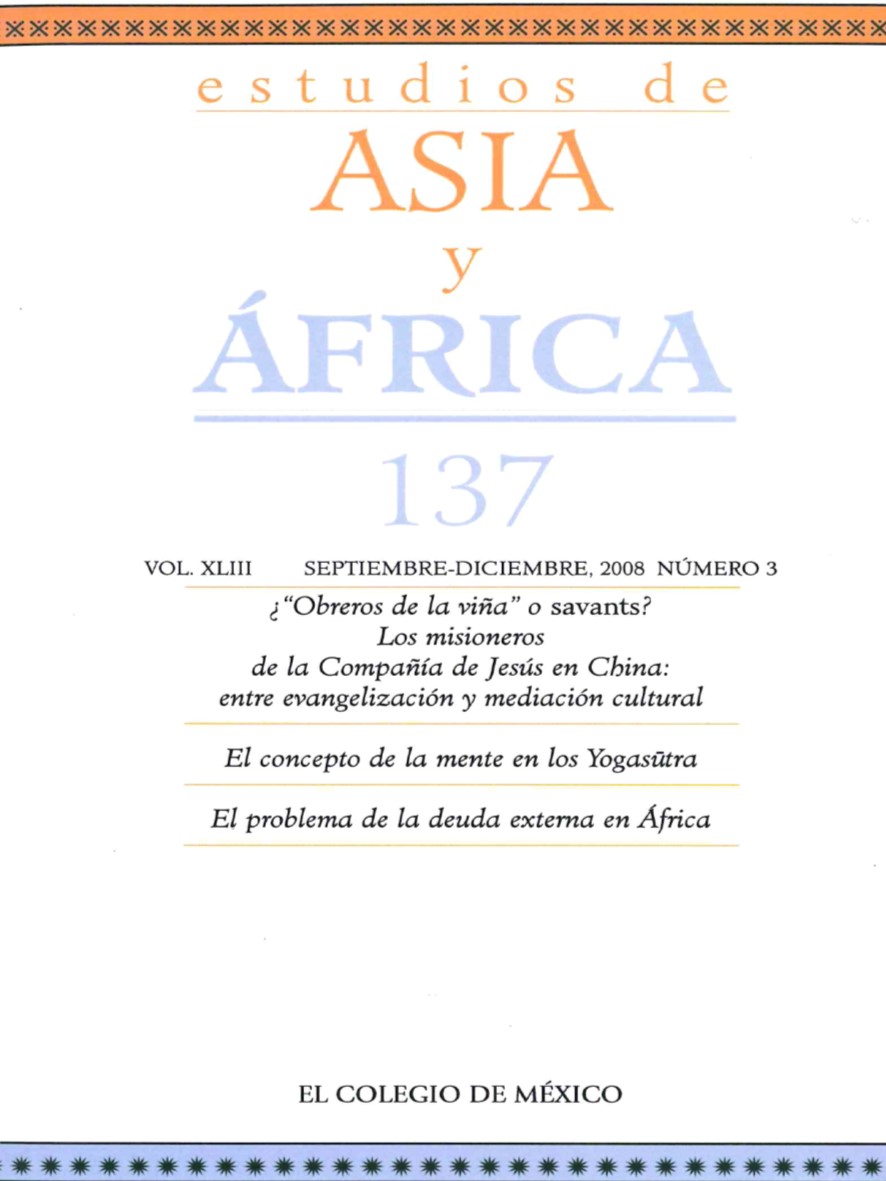Abstract
Since the 1980s many African countries began to experience profound limitations to pay their foreign debt. This scenario has led some authors to argue that elevated levels of foreign debt constitute a formidable obstacle to increase the overall well being of the respective African nations. This article examines the root causes of these increased levels of debt, as well as the various mechanisms which it has confronted. It concludes with an overview of the available evidence regarding the consequences of high levels of foreign debt and the benefits that are emerging as a result of their reduction.
References
ARSLANALP, Serkan y Peter Blair Henry, “Helping the poor to help themselves: debt relief or aid?”, WP 10234, Cambridge, NBER, 2004.
BIRDSALL, Nancy y John Williamson, Delivering on Debt Relief: From IMF Gold to a New Aid Architecture, Washington, D. C, Institute for International Economics, 2002.
BOYCE, James K. y Leonce Ndikumana, “Africa’s debt: who oweswhom?”, Political Economy Research Institute, WP 48, Amherst, Ma, 2002.
BROOKS, Ray, Mariano Cortés, Francesca Fornasari, Benoit Ketchekmen, Hdahlia Metzgen, Rober Powell, Saquib Rizavi, Doris Rossy Kevin Ross, “External debt histories of ten low-income developing countries: lessons from their experience”, IMF WorkingPaper 98/72, Washington, D. C., International Monetary Fund, 1998.
CLEMENTS, Benedict, Rina Bhattacharya y Toan Quoc Nguyen, “External debt, public investment, and growth in lowincome countries”, IMF Working Paper 03/249, 2003.
CHAUVIN, N. D. y A. Kraay, “What has 100 billion dollars worth of debt relief done for low-income countries?”, World Bank, 2005 (mimeo).
DASEKING, Christina y Robert Powell, “From Toronto terms to the HIPC Initiative: a brief history of debt relief for low-incomecountries”, IMF Working Paper 99/142, 1999.
DESSY, Sylvain y Désiré Vencatachellum, “Debt relief and social services expenditures: the African experience, 1989-2003”, African Development Review, 19, 1, 2007, pp. 200-216.
EASTERLY, William, “How did highly indebted poor countries become highly indebted? Reviewing two decades of debt relief”, WorldBank Policy Research WP 2225, Washington, D. C., 1999.
ELLIOTT, D. R. y R. Rhodd, “Explaining growth rate differences inhighly indebted countries: an extension to Thirlwall and Hus-sain”, Applied Economics, 31, 9, 1999, pp. 1145-1148.
FMI y BM, “The initiative for heavily indebted poor countries: reviewand outlook”, DC/98-15, Development Comitee, septiembre de1998.FOSU, Augustin, “The impact of external debt on economic growthin sub-Saharan Africa”, Journal of Economic Development, 21, 1, 1996, pp. 93-118.
FOSU, Augustin, “The impact of external debt on economic growthin sub-Saharan Africa”, Journal of Economic Development, 21, 1,1996, pp. 93-118.
FOSU, Augustin, “The external debt burden and economic growht in the 1980s:evidence from sub-Saharan Africa”, Canadian Journal of Development Studies, 20, 2, 1999.
FOSU, Augustin, “The international dimension of African economic growth”, CIDWP 34, Harvard, Ma., Center for International Developmentat Harvard University, 2000.
FOSU, Augustin, “Fiscal allocation for education in sub-Saharan Africa: implications of the external debt service constraint”, World Development, 35, 4, 2007, pp. 702-713.
FOSU, Augustin, “The external debt-servicing constraint and public expenditure composition. Evidence from African economies”, UNU-WIDER Discusion Paper núm. 2007/36, 2007.
GREENE, Joshua, “The external debt problem of sub-Saharan Africa”, en Jacob Frenkel, Michael Dooley y Peter Wickham, Analytical Issues in Debt, International Monetary Fund, Washington, D. C.,1989.
HUSSAIN, Nureldin y Bernhard Gunter, “External shocks and the HIPC Initiative: impacts on growth and poverty in Africa”, African Development Review, 17, 3, 2005, pp. 461-492.
KRUGMAN, Paul, “Financing vs. forgiving a debt overhang”, Journal of Development Economics, vol. 29, 1988, pp. 253-268.
MARCHESI, S. y A. Missale, “What does motivate lending and aid tothe HIPCs?”, University of Milan, Centro Studi Luca D’Agliano,Development WP 189, 2004.
NANNYONJO, Justine, “The HIPC debt relief initiative. Uganda’s social sector reforms and outcomes”, UNU-WIDER Discussion Paper No. 2001/138, 2001.
NDIKUDMANA, Leonce, “Additionality of debt relief and debt forgiveness, and implications for future volume of official assistance”, UNU-WIDER, Discusion Paper núm. 2000/97, 2002.
OJO, O. y T. Oshikoya,“Determinants of long-term growth: someAfrican results”, Journal of African Economies, 42, 2, 1995, pp. 163-191.
PATILLO, Catherine, Helene Poirson y Luca Ricci, “External debtand growth”, IMF Working Paper 02/69, Washington, Internatio-nal Monetary Fund, 2002.
PATILLO, Catherine, Helene Poirson y Luca Ricci, “What are the channels through which external debt affectsgrowth?”, IMF Working Paper 04/15, Washington, International Monetary Fund, 2004.
POKU, Nana, Neil Renwick, y Joao Gomes Porto, “Human securityand development in Africa”, International Affairs, 83, 6, 2007,pp. 1155-1170.
UNICEF, The State of the World’s Children 2006, Nueva York, UNICEF, 2006.
SACHS, J., “The debt overhang of developing countries”, en De Macedo y Findlay (comps.), Diaz Memorial Volume, Helsinki, WiderInstitute, 1988.
THIRLWALL, A. P., “The balance of payments constraint as an expla-nation of international growth rate differences”, Banca Nazionaledel Lavoro Quarterly Review, vol. 128, 1979, pp. 44-53.
THIRLWALL, A. P. y M.N. Hussain, “The balance of payments cons-train, capital flows and growth rate differences between developing countries”, Oxford Economic Papers, vol. 34, 1982, pp. 498-510.
WERE, Maureen, “The impact of external debt on economic growthin Kenya”, UNU-WIDER Discusion Paper núm. 2001/116, 2001.
This work is licensed under a Creative Commons Attribution-NonCommercial-NoDerivatives 4.0 International License
Copyright 2022 Estudios de Asia y África


